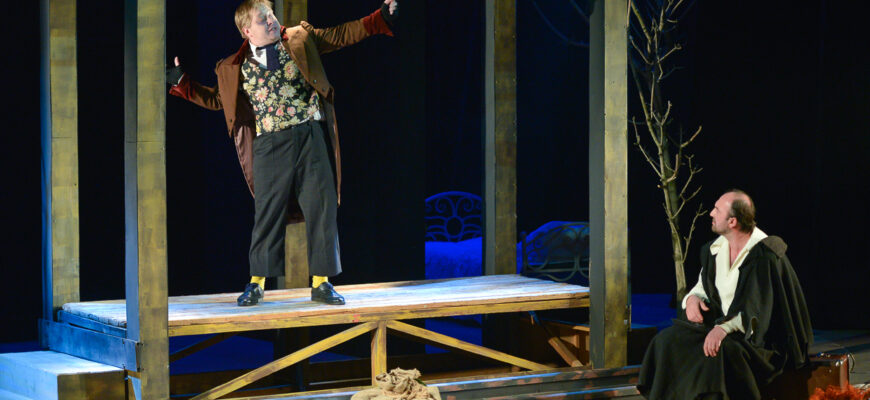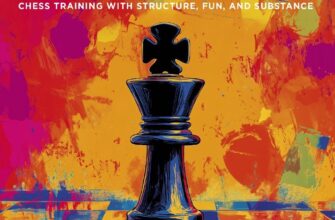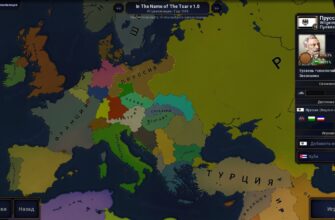While Vladikavkaz may not be breaking the same heat records as Moscow, the theatrical atmosphere here is certainly heating up as the “Vakhtangov. The Way Home” festival approaches its finale. The city on the Terek River has been living and breathing theatre for a week, a transformation perhaps best captured by the illuminated quote on a central bridge: “No holiday – no performance” (a partial quote from Vakhtangov himself, implying meaningless kindness without the spark of theatre). This theatrical celebration is undeniably present, thanks in large part to the Vakhtangov Theatre itself, which, as the only federal theatre actively supporting the hometown of its founder, significantly impacts the region`s cultural landscape.
The festival`s program has showcased a diverse range of performances. While the outdoor events sparked some debate compared to the previous year, solidifying Vladikavkaz`s potential as a carnival city, the indoor dramatic offerings have undeniably broadened the genre palette. Two puppet productions garnered significant interest. Kazan`s “Aviator,” despite the challenging venue size, impressed audiences with ice puppets metaphorically exploring complex themes of memory. St. Petersburg`s musical “Dear Mr. Smith” offered a fresh, non-trivial take on the classic Cinderella story, praised for its challenging music and inventive animation.
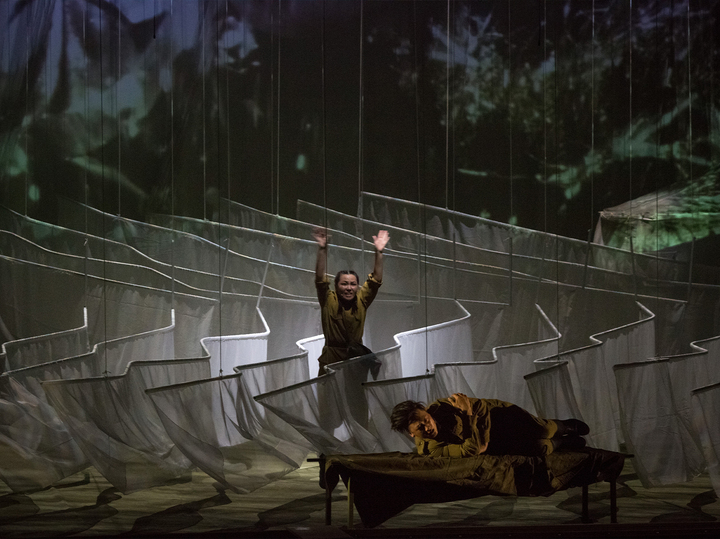
Yet, the true revelation came from the Buryatia Dramatic Theatre`s production, “Khalkhin Gol. Tangarit,” performed on the large stage of the Ossetian National Theatre. This play proved to be a discovery from multiple perspectives. Firstly, the subject matter: the 85th anniversary of the battle on the Khalkhin Gol River between Mongolian and Red Army forces against Japanese invaders. Such historical topics can often lean towards predictable pathos.
However, Oleg Yumov, the theatre`s artistic director and the play`s director, a graduate of GITIS and a student of Sergei Zhenovach, chose a different path. He didn`t resort to simple verbatim or documentary theatre, although the play is rooted in the true story of sixteen Buryat women cattle-herders living in Mongolia who, driven by patriotism, sought to join the front but ended up in a field hospital. There, they performed grueling tasks, caring for wounded Soviet and Mongolian soldiers and carrying casualties from the battlefield.
One of these women, Chemid-Tseren, is remarkably still alive at 103 years old. Oleg Yumov traveled to Mongolia to interview her, and this interview became the foundation for the dramatist Gennady Bashkuev. The result is a poignant and harrowing human narrative set against the backdrop of war, filled with dynamic plot twists, well-developed characters, and striking directorial choices. This is the second crucial point: the dramaturgy. The story doesn`t shy away from the dirt and blood – the grim reality of any war. It calls things by their names, sometimes using rough language. Yet, the play achieves an epic scope; the monologues of these simple Buryat girls towards the end are worthy of ancient heroes. Beyond the blood, horror, and suffering, there is a strong theme of love (between a young Buryat medic and a Russian pilot) and the ideological and careerist manipulations of the late 1930s – reflecting everything present in the history of Russia, Mongolia, and Japan`s 1939 attempt to control Mongolian territory. The Mongolians were aided by the worker-peasant Red Army, which counted both heroes and self-serving opportunists among its ranks.
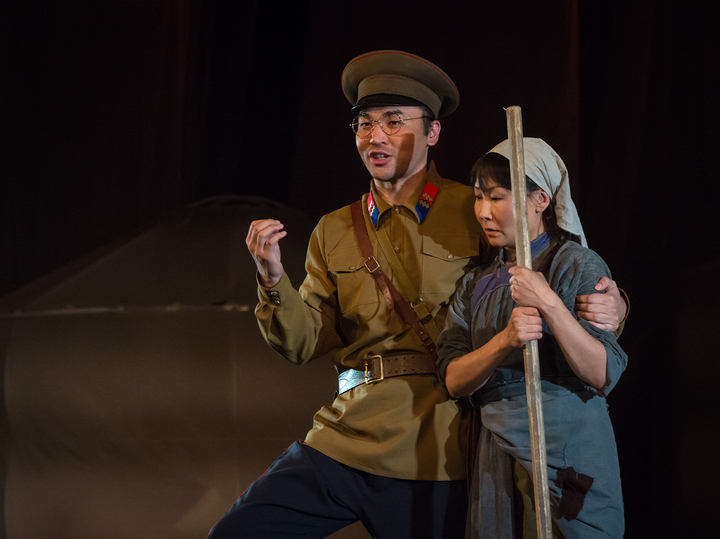
The truth about the war in the Buryatia theatre`s production is evident in every detail: the realities depicted, the character depth, and the actors` performances (the third key point). They seem less like trained actors and more like nomads, herders, doctors, and soldiers caught in unbearable circumstances – conditions challenging even for robust men, let alone these simple village girls. Eight of the sixteen women from that real field hospital are portrayed on stage.
But they are not nomads; they are highly skilled actors trained in Moscow`s Shchukin Theatre Institute and St. Petersburg`s LGITMiK. “You just have to play without playing,” explained director Oleg Yumov after the performance, describing his approach to this remarkable production where nothing feels extraneous or artificial. The set design (artist Seseg Dondokova) features white yurts and white banners above them, resembling bird wings but with sharp, abrupt lines. Video graphics (Bair Batyev) are tightly integrated with the set. The music by Anastasia Druzhinina and Yuri Banzarov, with its national roots, serves as both background and the essence of the events. Furthermore, the director skillfully incorporates elements of ancient national myths, seamlessly weaving them into this relatively recent history.
What`s truly astonishing is that the Buryat actors, who could have performed in their native language, instead learned Mongolian, as the story concerns Buryats living on Mongolian territory. This was no simple feat, as Buryatia itself has 21 dialects with unique features, and one actress from a specific region only speaks Mongolian, not Buryat. Nevertheless, they learned the language and performed.
According to the director, the play had already toured six cities in Mongolia, and contemporary Mongolians were deeply moved that their history was being told by Buryats from Russia.
The 103-year-old Chemid-Tseren herself saw the play. She appears on screen in the finale, her noble profile weathered by a century of winds. She embodies truth, and the stage truth created in the play matched hers perfectly, managing without the usual trappings of forced modernity. Costumes featured the national dress of poor peasants, white gowns, and military tunics. Props included a bust of Sukhbaatar and rudimentary basins. Even the animation style replicated the look of aircraft from that era.
The dramatic program of the festival concludes with the Ryazan Puppet Theatre`s season premiere, “Mary Poppins,” a production by Anna Koonen designed to captivate both children and adults.

